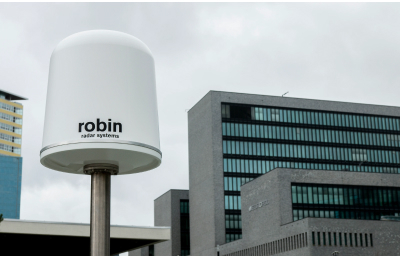Here at Robin, we’re true advocates of the powers of counter-UAS radar. No surprises there.
But we also headline our technology not as the stand-alone answer, but as an integral part of an entire C-UAS solution. No single sensor can detect, track, classify and neutralise drones. It takes several, working in absolute harmony to tackle the illusive drone and its unpredictable pilot.
Whether it's a careless amateur or a deliberate organised attack, the threat comes in many shapes and sizes. And it must be handled with serious precision every time.
Only C-UAS radar is capable of detecting everything within its broad range, acting as the primary sensor to alert and cue others within this specialised ecosystem. This is why we partner with experienced and knowledgeable system integrators.
Putting interoperability to the test: NATO TIE23
Data interoperability is essentially how well each element in a C-UAS system can access, communicate and share information. It refers to how data is formatted to allow diverse data sets to be merged, giving operators quick and efficient insights based on the synchronised operation of multiple sensors.
NATO’s Counter Unmanned Aircraft System Technical Interoperability Exercise (C-UAS TIE23) sets a challenge for industry leaders. The aim: to ensure high-tech solutions can connect instantly and operate together seamlessly.
From 12 - 22 September 2023 the data interoperability of some 70 C2 systems, including sensors, effectors and jammers, was tested. Bringing together military, scientific and industry specialists, the event saw over 300 participants from 15 Allied and three partner nations, the European Union and the private sector gather in the Netherlands.

To showcase integration with radar at the heart of detection, IRIS was successfully interfaced with various systems. Robin Business Development Manager, Defence and Security, Bob Moll said: "The event was very useful in highlighting the need for interoperability standards, such as SAPIENT.
“SAPIENT enables merging data from various sensors, which means a fast and easy connection of multiple sub-systems to form a complete C-UAS solution. However, each use case is different. For some of our larger partners, such as Dedrone for instance, access to our native API offers lower-level data for an even deeper level of synergy.”
Robin’s radar track feeds into Dedrone’s C2 and its uniquely powerful fusion engine to deliver the most accurate UAS track, providing joint customers with a more comprehensive and effective solution. This integration was effectively applied at the 2023 Global Economic Forum.
Dedrone CMO, Mary-Lou Smulders, added: “Our collaboration with Robin is characterised by a shared dedication to ensuring airspace security through cutting-edge technology. Partners like Robin provide valuable feeds into our AI/ML driven C2 to further enable us to provide the most accurate CUAS solutions for a variety of security."
A formidable full-solution system
Drones pose serious risks to restricted airspace; airports, prisons, political summits and sporting events, oil rigs and powerplants. In every use case, the modern drone detection system must rise to the serious challenge of detecting them under conditions of low visibility and in environments full of obstacles and moving objects.
This is what places high-performing radar at the heart of any worthy C-UAS System.
- Radar technology is durable and hardy in all weathers.
- IRIS is hyper-deployable due to low SWaP and automated calibration.
- Radar is unaffected by daylight, performing equally well in darkness.
Detecting, tracking, classifying and verifying non-cooperative objects in airspace is the trigger that puts plans and countermeasures in motion. And that’s exactly what we’ve built our C-UAS radars to do.
Business Development Manager, Defence and Security, Bob Moll, adds: “We believe in the power of cooperation. IRIS and ELVIRA are designed to operate in synergy with other technologies, and that’s what makes them the preferred primary sensors within a ‘system of systems’.


